Gallery Network
Spotlight: Dealer Spencer Throckmorton’s Millennia-Spanning Collection of Chinese Jade Phoenixes Go On View in New York
"Phoenix: Symbol of Virtue, Peace, and Harmony" is now on view at Throckmorton Fine Art.

"Phoenix: Symbol of Virtue, Peace, and Harmony" is now on view at Throckmorton Fine Art.

Artnet Gallery Network

Every month, hundreds of galleries add newly available works by thousands of artists to the Artnet Gallery Network—and every week, we shine a spotlight on one artist or exhibition you should know. Check out what we have in store, and inquire for more with one simple click.
What You Need to Know: Right now, New York-based gallery Throckmorton Fine Art is presenting “Phoenix: Symbol of Virtue, Peace, and Harmony,” a dazzling exhibition focused on historical jade carvings of the phoenix—and examples of ancient avian carvings—from Chinese mythology. Comprised of over 60 jade pieces, the collection was amassed by the gallery’s founder Spencer Throckmorton over the span of 27 years. The carvings range from the late Neolithic period through to the Qing Dynasty (1644–1912) and showcase the astounding development of Chinese jade carving over the course of several millennia. The exhibition is accompanied by a catalogue that traces the history of Chinese jade birds, with writings by Gu Fang, senior fellow of the Institute of Archaeology, Chinese Academy of Social Sciences, who is a leading expert on the subject. The exhibition will be on view through May 6, 2023.
Why We Like It: Whether you’re an avid collector or someone new to the tradition of jade carving, “Phoenix: Symbol of Virtue, Peace, and Harmony” offers an incredible opportunity to explore and discover extremely rare and exquisite examples of ornamental and ceremonial Chinese jade pieces. The pervasiveness of phoenix and avian motifs in works, dating from ancient times through the early 20th century, underscores the importance of the subject’s symbolism in Chinese culture. The collection is a celebration of masterful craftsmanship; a spectacular white jade “marriage phoenix” pendant featuring incredibly precise openwork carving replete with dragons and phoenixes is in fact made up of two mirrored halves. Another highlight of the show is an assembly of jades that are gilt from the Warring States period (475 to 221 B.C.E.), combining the traditions of jade carving and metalwork together. Together, the show offers viewers an incredible glimpse into the rich tradition of Chinese jade carving and the collection of a connoisseur.
According to the Gallery: “Phoenix (Fenghuang) imagery was widespread throughout the many periods of Chinese history, and these masterful carvings were the talisman of the cultures that produced them. A belief in the importance of ‘fortune’ is an enduring, and charming, characteristic of Chinese mythology. But the phoenix is also a symbol of harmony, so these talismans were—and are—symbols of hope.
Some of the works on view include a large, yet impossibly thin ‘cloud’ shaped pendant with bird figures from the Hongshan (4700–2500 B.C.E) culture. There are eccentric ornamental fittings and pendants from the Shang (1600–1100 BCE) and Zhou periods (1066–221 B.C.E.). From the Han Period (206 B.C.E.–220 C.E.), there are pendants, belt hooks, and other adornments decorated with meticulously carved relief work. Other works highlight the craftsmanship of the Tang (618–907 C.E.), Yuan (1279–1368 C.E.), and Qing (1644–1912 C.E.) periods. Separated by millennia, these cultures differ in their visual language, yet all exhibit a reverence for avian imagery.”
See featured works from the exhibition below.
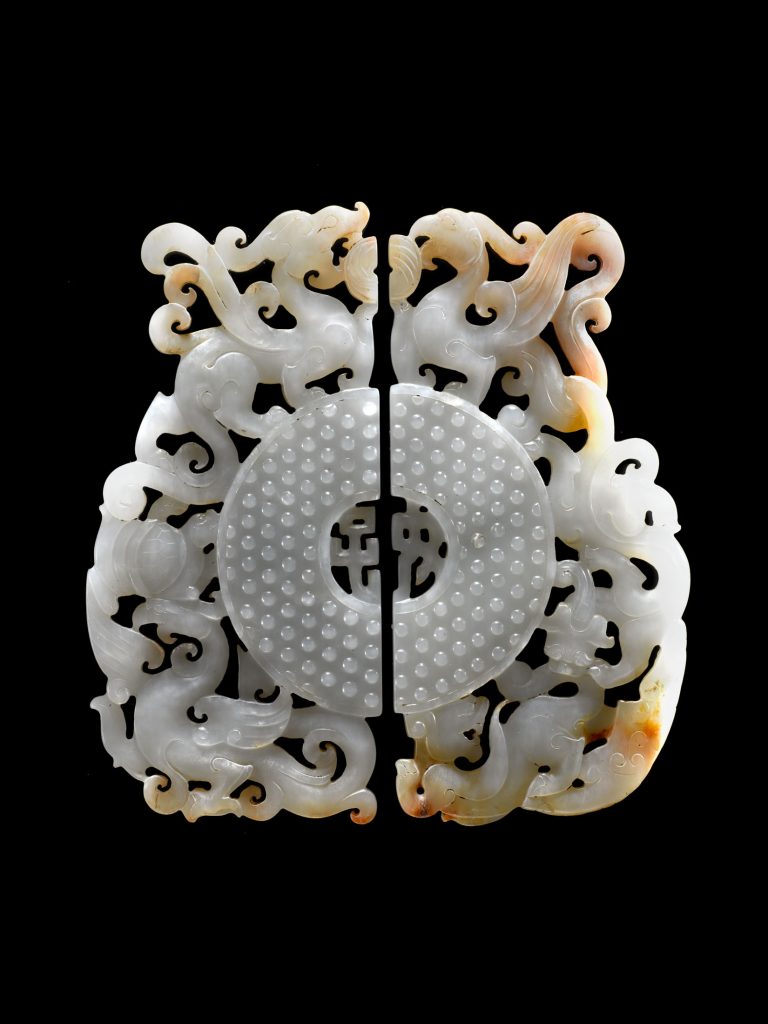
Jade Dragon and Phoenix Openwork Pendant, Qing Dynasty (1644–1912 C.E.). Courtesy of Throckmorton Fine Art
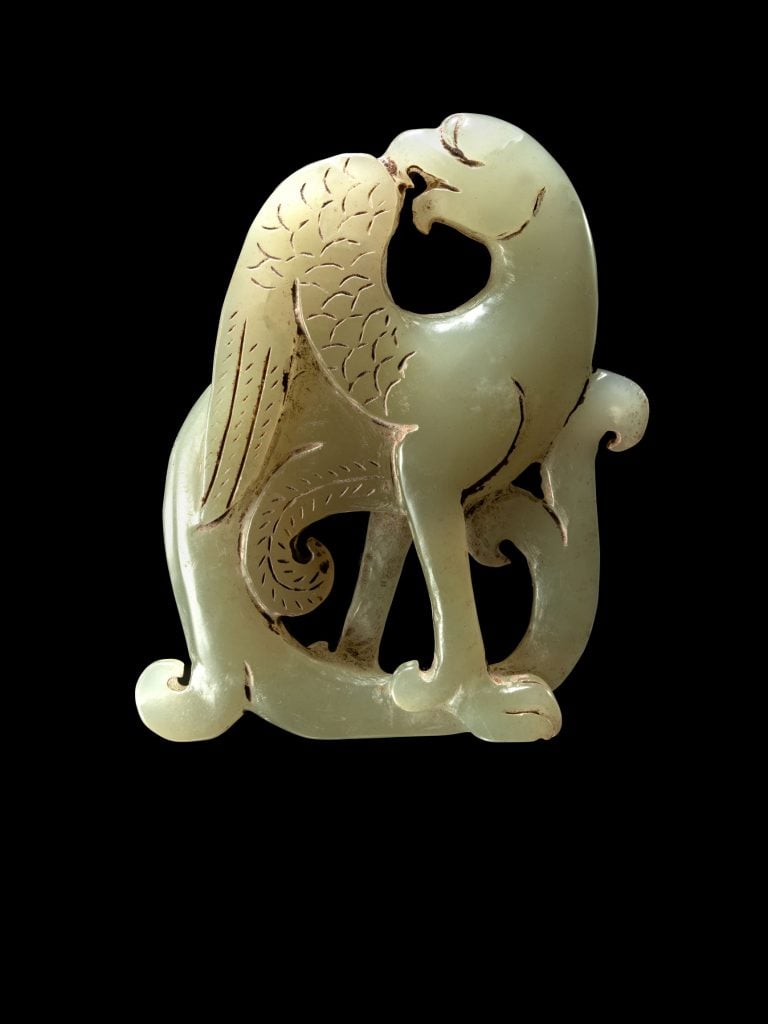
Jade Phoenix Pendant, Qing Dynasty (1644–1912 C.E.). Courtesy of Throckmorton Fine Art, New York.
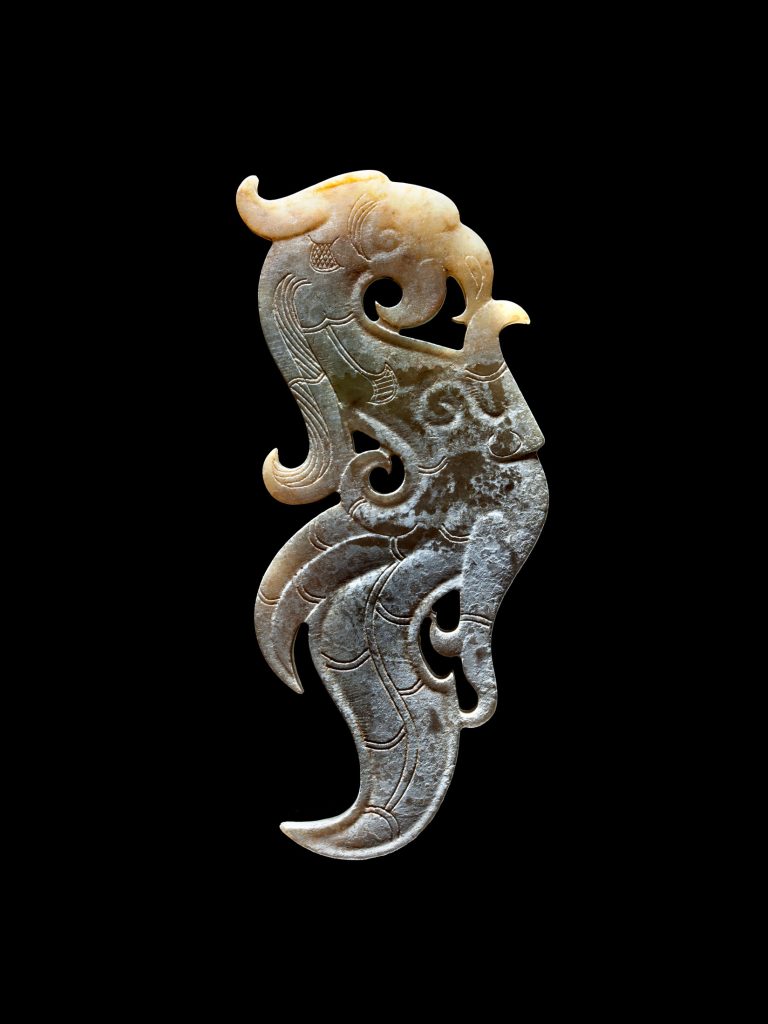
Jade Phoenix Pendant, Han Dynasty (206 B.C.E.–220 C.E.). Courtesy of Throckmorton Fine Art, New York.
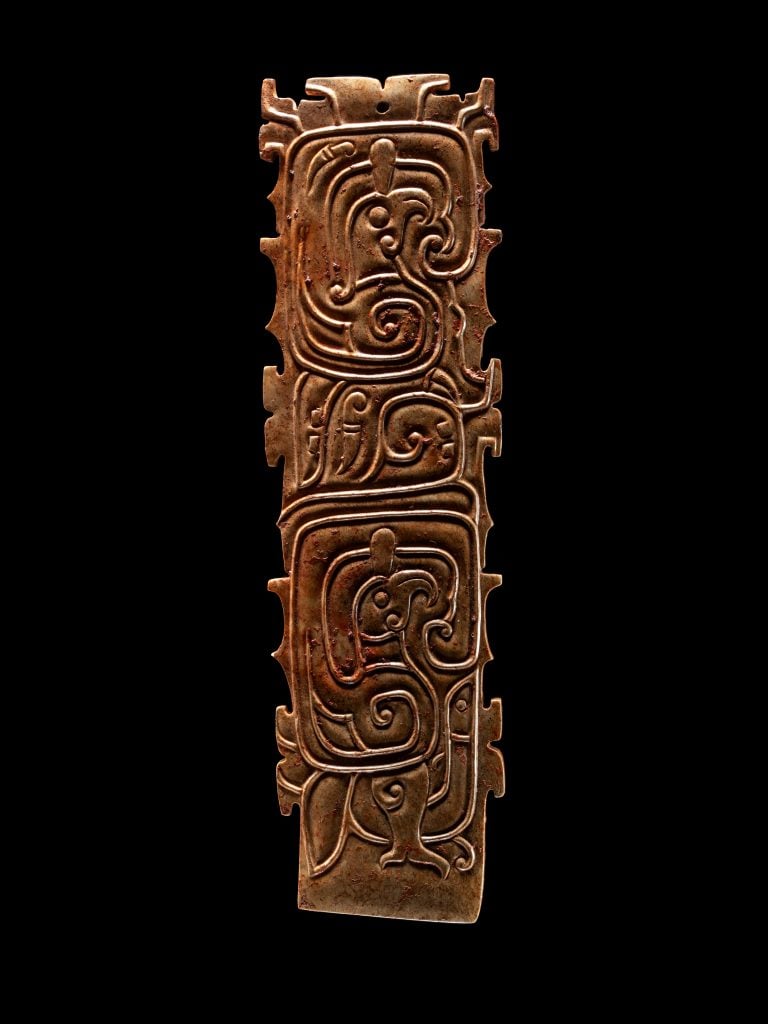
Jade Engraved Phoenix Plaque, Western Zhou Period (1066–771 B.C.E.). Courtesy of Throckmorton Fine Art, New York.
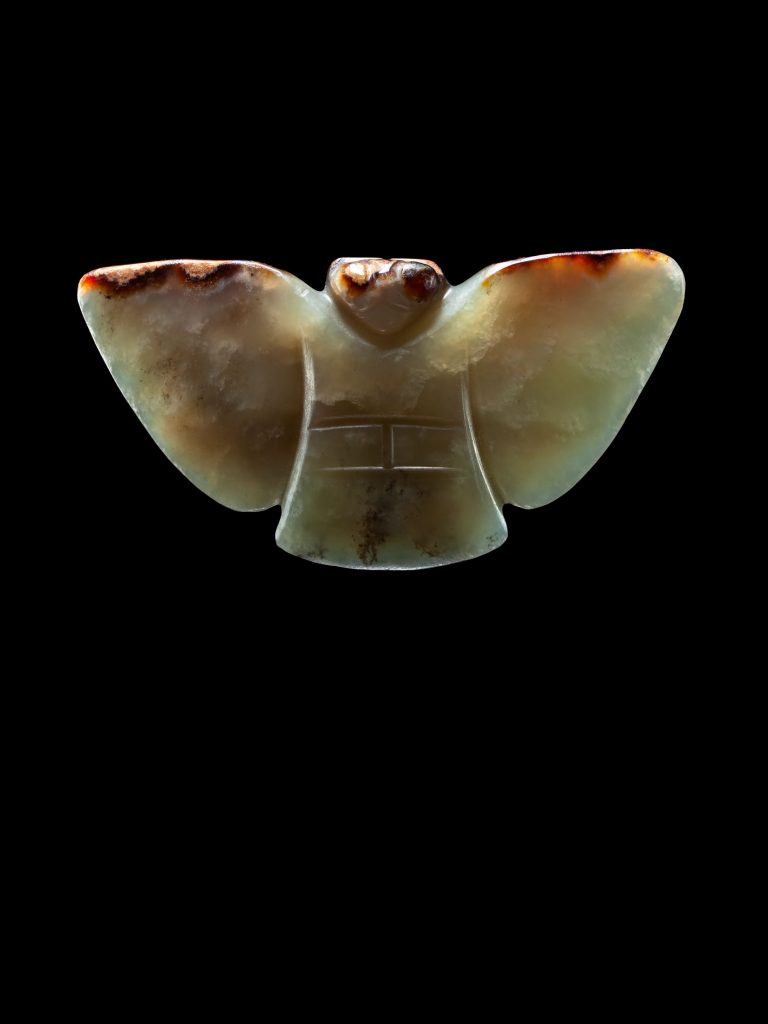
Jade Horned Owl Pendant, Late Neolithic Period, Hongshan Culture (4700–2500 B.C.E.). Courtesy of Throckmorton Fine Art, New York.
“Phoenix: Symbol of Virtue, Peace, and Harmony” is on view at Throckmorton Fine Art through May 6, 2023.
